Delacour’s Langur has a narrow distribution range, only in the Northern region of Vietnam. It is estimated that there are approximately 200 individuals, with 100 of them concentrated in one area. Other areas are fragmented, and the populations there are small. This species is another member of the list of the 25 most critically endangered primates in the world.
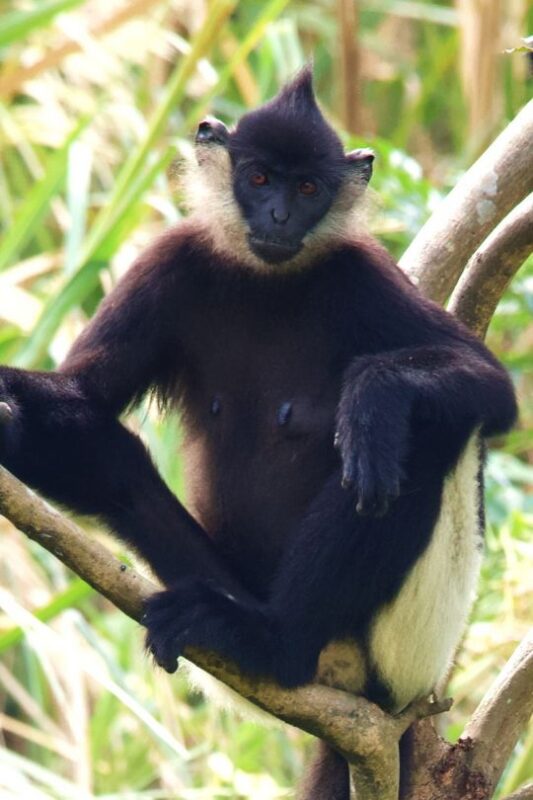
Taxonomy and Classification:
Regnum: Animalia
Phylum: Chordata
Class: Mammalia
Ordo: Primates
Familiar: Cercopithecidae
Genus: Trachypithecus
Species: Trachypithecus delacouri
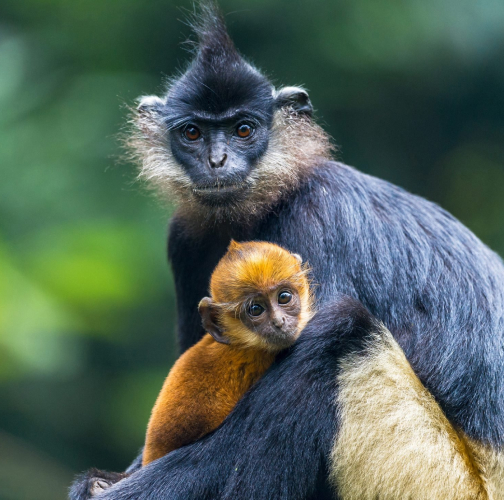
The body weight is 8.1 – 9 kg; the length of the head and body is 0.46 – 0.665 m. There is black fur on the top of the head, with fairly wide white stripes on both sides of the cheeks extending upwards along the edge of the ears. The legs have black fur. The buttock area has white fur extending to the base of the tail and thighs; long arms and legs. The tail is longer than the body, with black fur. The primary diet consists of tree shoots, leaves, and fruit.
Most of the remaining populations are small, with fewer than 20 individuals. A notable exception is a population of 30 to 40 individuals still living in the Pu Luong Nature Reserve, Thanh Hoa province, and another population, recently discovered at an undisclosed location.
A group typically consists of one male, several mature females, and their offspring.
Habitat and Distribution:
Inhabiting the lush expanses of evergreen forests and dense shrubbery, this remarkable primate species finds its home in the heart of nature’s green tapestry. Thriving in elevations that span from 500 to 1,000 meters, these creatures carve their existence on the majestic limestone mountains, where the challenges of limited water sources shape the boundaries of their habitat. It’s a delicate dance between survival and adaptation in these pristine landscapes.
The magnificence of their existence is most pronounced in the Vân Long Nature Reserve, nestled within the province of Ninh Bình. Here, against the backdrop of limestone formations and verdant canopies, a notable population of these primates has been meticulously documented. A community of a hundred strong, their presence serves as a testament to the delicate equilibrium they maintain within this protected haven.
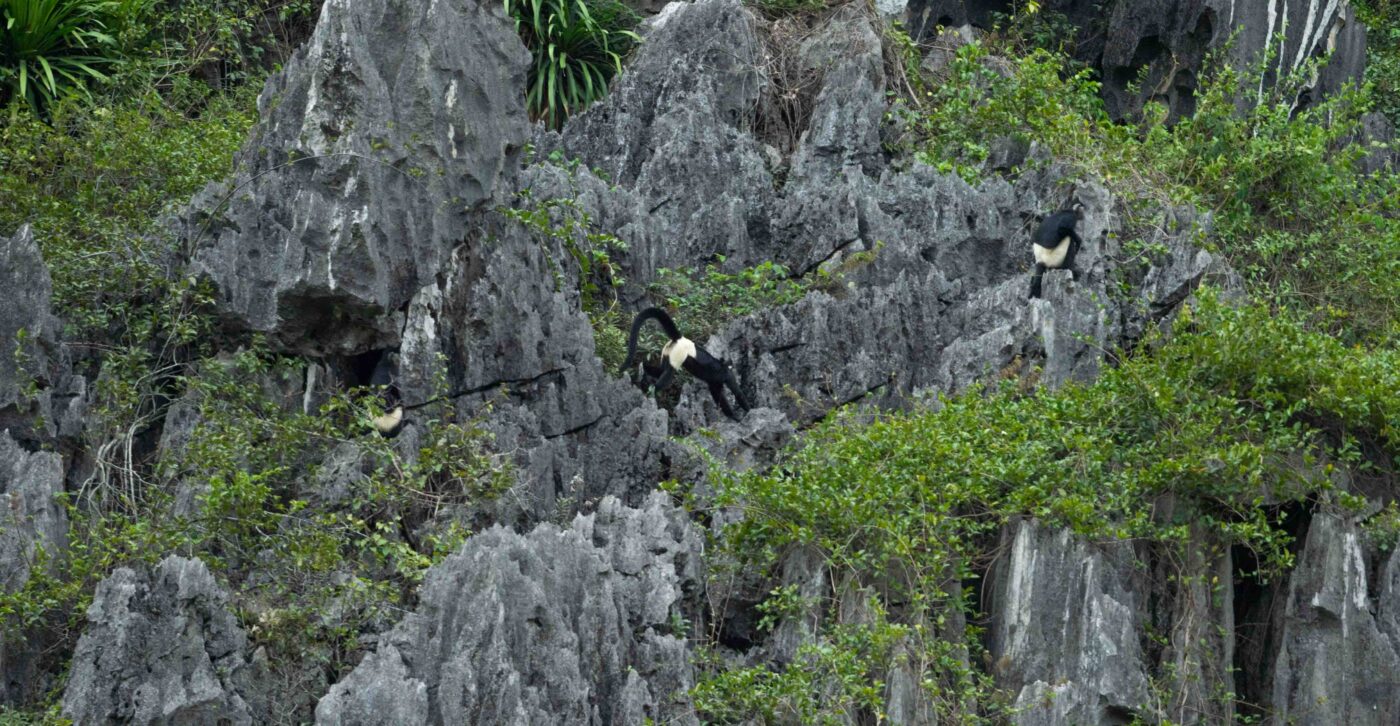
These elevations, ranging from 500 to 1,000 meters, create an environment uniquely suited to the needs of these primates. It’s not merely a geographical detail but a crucial factor that dictates their lifestyle and behavior. The challenges posed by the scarcity of water sources contribute to the intricacies of their existence, as they navigate the subtleties of survival in this elevated domain.
In essence, these primates have etched their stories into the limestone canvas of these mountains, adapting to the intricacies of their environment. The Vân Long Nature Reserve stands as both a sanctuary and a stage for the dance of life, where these primates play a vital role in the delicate choreography of nature’s grand spectacle.
Behavior and Social Structure:
The Delacour’s langur, in its unique splendor, exhibits diurnal behavior, meaning it is most active during daylight hours. A distinctive feature of their lifestyle is the flexibility to seamlessly switch between arboreal (tree-dwelling) and terrestrial environments. When navigating through the intricate network of branches, these primates showcase their agility by leaping from one branch to another, a captivating display of their mastery of both the tree canopy and the terrestrial realm.
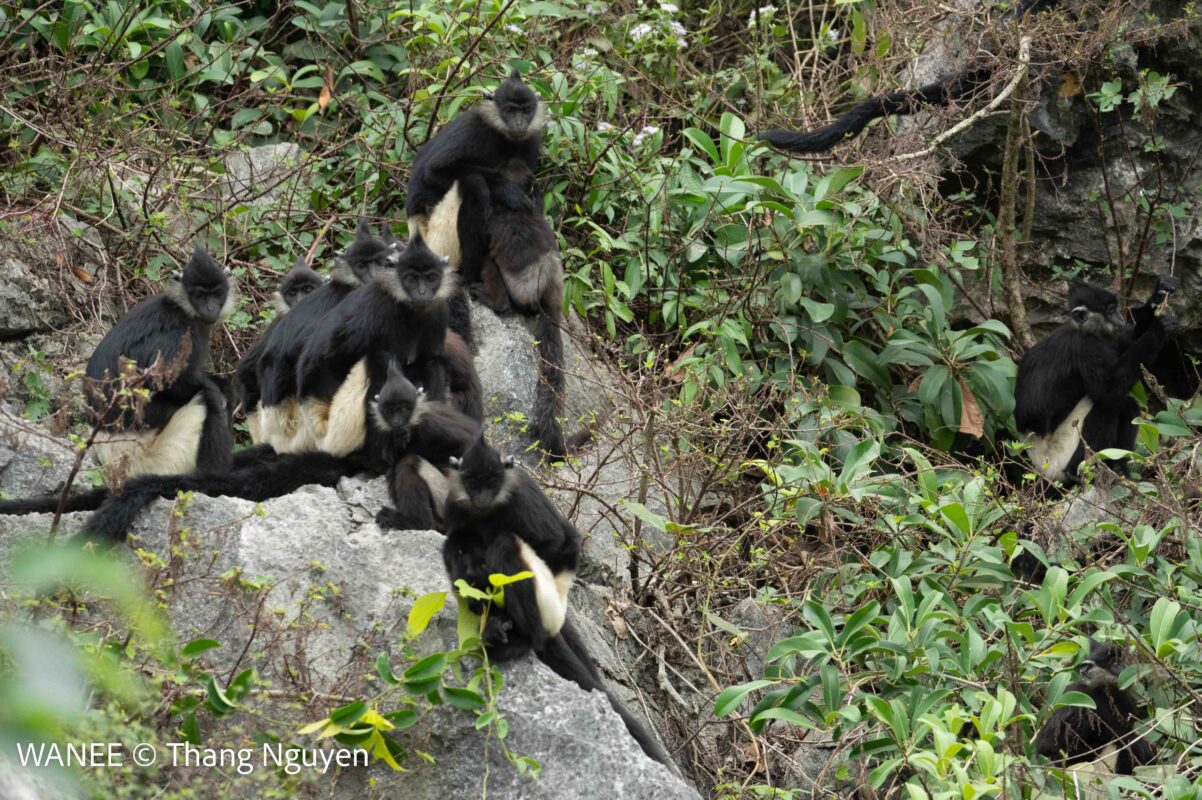
Notably, their movement is characterized by graceful leaps rather than the swinging motions commonly associated with other primate species. This dual lifestyle underscores the adaptability of the Delacour’s langur, allowing them to thrive in diverse habitats and showcase their unique acrobatic prowess.
Reproductive Biology:
In the intricate social tapestry of Delacour’s langurs, the dominant male takes center stage in the realm of mating rituals, engaging with the females within the group during the period from January to June. A fascinating aspect of their reproductive cycle is the duration of pregnancy, spanning a noteworthy 6 to 7 months. The mothers, in a testament to the wonders of nature, typically give birth to a single offspring, although the rare occurrence of twins has been documented on special occasions. Adding an extra layer of communal care, Delacour’s langurs practice allomothering, a cooperative effort where all females and juveniles within the group actively participate in nurturing the newborn under the watchful guidance of the mother.

Despite females reaching sexual maturity by the age of four, they often defer mating until the age of around six. This delay allows them to attain both the physical and mental readiness required for the responsibilities of motherhood. In a parallel journey, males reach sexual maturity at approximately five years old, marking a pivotal juncture in their lives. At this stage, they embark on a transformative journey, leaving their natal family behind to join an exclusively male group. This intricately woven narrative of reproduction and societal dynamics sheds light on the sophisticated and harmonious existence of Delacour’s langurs.
Conservation Status:

The Delacour’s langur, tragically, holds the disheartening distinction of being listed as Critically Endangered by the International Union for Conservation of Nature (IUCN, 2015). In the delicate balance of existence, researchers somberly estimate that a mere 200 to 250 individuals of this species endure in the wild, with an additional 19 in captivity. Unsettlingly, this primate has been a recurring feature on every iteration of the IUCN’s “World’s 25 Most Endangered Primates.”
A disconcerting revelation from the Vietnamese Journal of Primatology reveals a distressing decline in Delacour’s langur populations. Of the 16 populations documented in 2004, at least 6 faced eradication by 2011. The stark reality persists that the majority of the remaining 10 populations consist of just one or two families, rendering their long-term survival precarious without significant human intervention. Notably, only the populations within Van Long Nature Reserve and potentially Pu Luong Nature Reserve boast sufficient numbers to persist independently.
Regrettably, the gravest threat looming over these langurs is human hunting. Both local communities and Chinese poachers relentlessly pursue these primates, driven by the demand for their bones and tissues in traditional medicines. Compounding this dire situation, the Vietnamese government’s enforcement efforts have been woefully inadequate. Despite hundreds of annual poacher arrests, a mere 10% face prosecution, leaving a disconcerting gap in the protection of these endangered creatures.
Adding to the litany of challenges, habitat destruction casts a menacing shadow, particularly through limestone mining for cement production. While the IUCN suggests this threat is minor, as the langur’s primary habitats face limited deforestation pressure, the overarching narrative remains one of peril for the Delacour’s langur, requiring urgent and concerted conservation efforts to avert an irreversible decline.
Why don’t you visit Vietnam on a primate discovery tour? Click here.
Delacour’s Langur: A Rare Glimpse into Vietnam Wildlife
Delacour’s langur, a species of poignant elegance, reveals a tale of adaptability, communal dynamics, and perilous endangerment. Their physical features, agile movements in arboreal and terrestrial realms, and resilient habitats, notably in Vân Long Nature Reserve, showcase their unique existence. Yet, the narrative turns somber as their critical endangerment, dwindling populations, and threats from human hunting and habitat destruction loom large. The urgency to safeguard their delicate dance in nature’s grand spectacle resonates, emphasizing our collective responsibility to ensure the endurance of Delacour’s langur amid the challenges they face.
Delacour’s Langur Wildlife Tours in Van Long Nature Reserve
At WANEE, we believe that the more we appreciate nature, the more we’ll want to protect it. That’s why our tours are designed to inspire a deeper love for wildlife and a stronger commitment to conservation. While trying harder every day to protect the balance of nature, our wildlife tours give tourists the chance to explore Vietnam’s natural beauty, understand how different habitats connect, and take action to protect them.
Scheduled Wildlife Tours
Tailored Wildlife Tours
Click here to see more tailored tour options
Visit our sites:
– Facebook: WANEE Vietnam (Wild and Nature Exploring)
– Instagram: WANEE Vietnam and WANEE Kids hub
Are you looking for Wildlife Tours in Vietnam?
WANEE VIETNAM is your go-to destination for "Wildlife Tours in Vietnam", specializing in Birding, Primate Watching, Herping, Photography Tours and Educational Tours led by our expert guides.Hot-spot for Birding in Vietnam
all birding in hot-spot informative info [updated Jan 2023]
Nr. Nature reserve; Np. National Park; mt. Mountain
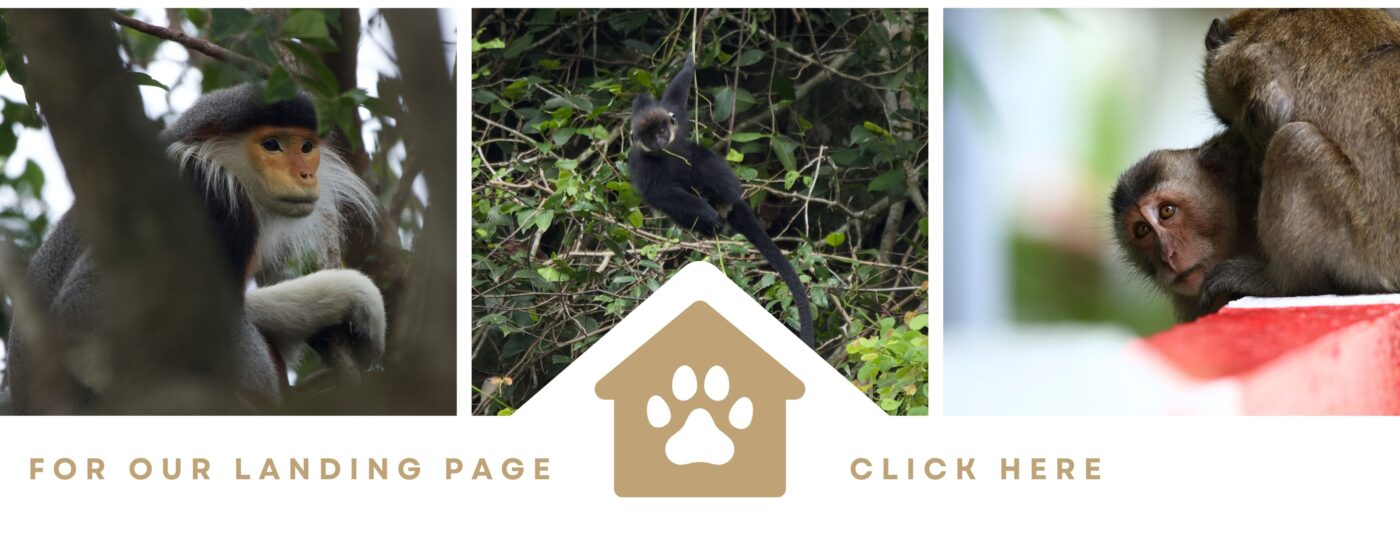
Crocodile Trail – The Best Birding Trail in Cat Tien National Park
If you’re a birder or nature photographer planning a trip to Vietnam, few places offer [...]
Cong Troi Trail – Top 1 Dalat Plateau Birding Trail Experience
If you’re a birder or nature photographer planning a trip to Vietnam’s Central Highlands, the [...]
How to Identify the Greater Sand Plover, Tibetan Sand Plover and Siberian Sand Plover
Identification Differences within the Sand Plover Complex: The sand plover group, which was traditionally divided [...]
Highlights of Cat Tien National Park Reptiles and Amphibian Endemics
Spanning over 71,350 hectares of tropical forests, grasslands, and wetlands, Cat Tien National Park is [...]
Highlights of Cat Tien National Park Mammals in a World Biosphere Reserve
In addition to reptiles and birds, Cat Tien National Park is also rich in mammals, [...]
Kontum Plateau Endemic and Highlight bird
Kontum Plateau Endemic And Highlight Bird species like Chestnut-eared Laughingthrush and top birding routes while [...]